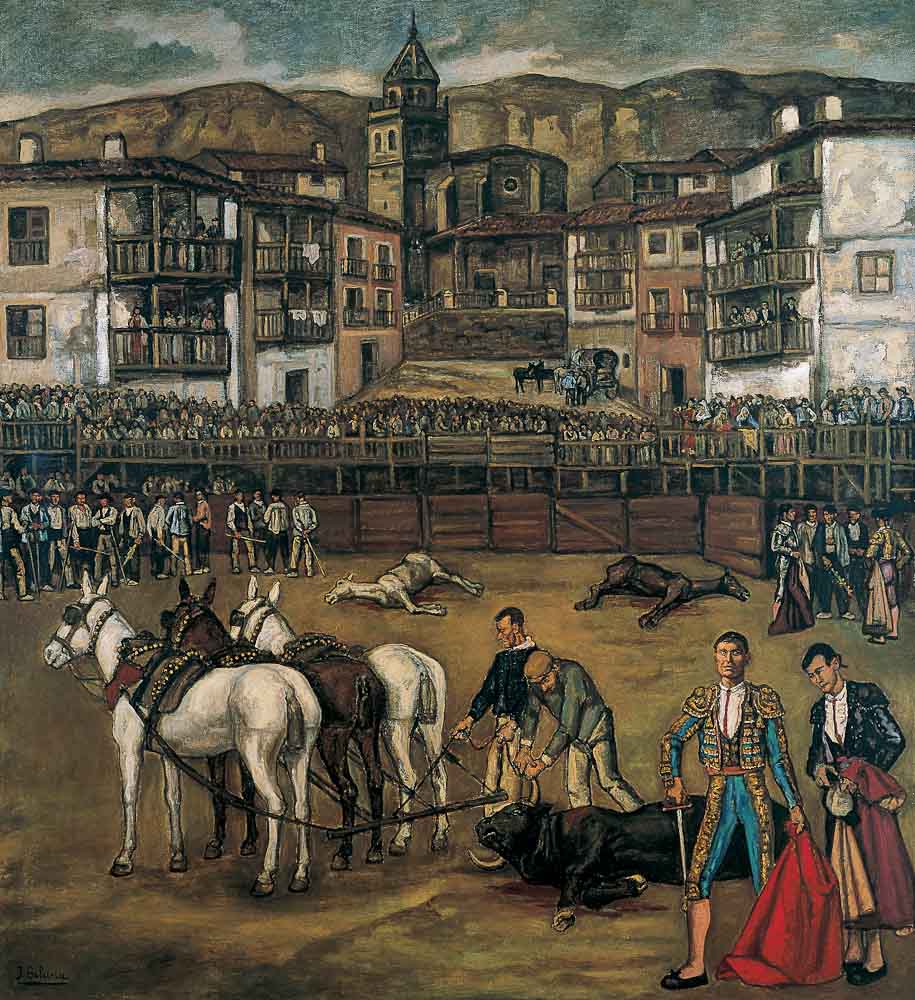
José Gutiérrez Solana (Madrid, 1886-1945)
Dragging out the Bull
ca. 1936
WORK INFORMATION
Oil on canvas, 230 x 210 cm
OTHER INFORMATION
Signed at the lower left corner “J. Solana”
Like many artists of his generation, the world of bullfighting was central to Solana’s painting. During the early years of his career while he was still studying art he would regularly visit the Museo del Prado where he was inspired by Goya’s remarkable interpretations of this subject in both his paintings and prints.
In 1904 Solana painted The Picador, which to some extent follows Goya’s Suerte de Varas, while his painting of The Mule Team is based on Dragging out the Bull, at that date considered an autograph work by Goya. Like Goya, Solana used the bullfight to convey the reality of Spain in his own time, although Solana’s depictions are more local in feel, lacking Goya’s universal critical sense and also the positive, festive atmosphere evident in his works.
Solana gradually moved away from the influence of the Old Masters and developed his own approach to this subject, creating his own tauromachia, to which he gave form in his writings and paintings.
The influence of Goya is evident in the present work of 1936 entitled Dragging out the Bull, specifically in the depiction of the mule train. In addition, it reveals Solana’s contradictory sentiments towards bullfighting: he reflects its cruelty in the motif of the two horses dragging the animal away, but also the sense of triumph embodied in the bullfighter, who is painted in brilliant colours, cape in hand and located in the centre of the composition.
The scene is a calm one, seemingly frozen in time, a fact that suggests that once again Solana made use of a postcard as the basis for his work. The artist used the village of Albarracín, where the bullfight takes place, as another important element in the composition, achieving a masterly equilibrium between the setting and the figures.
María José Salazar
